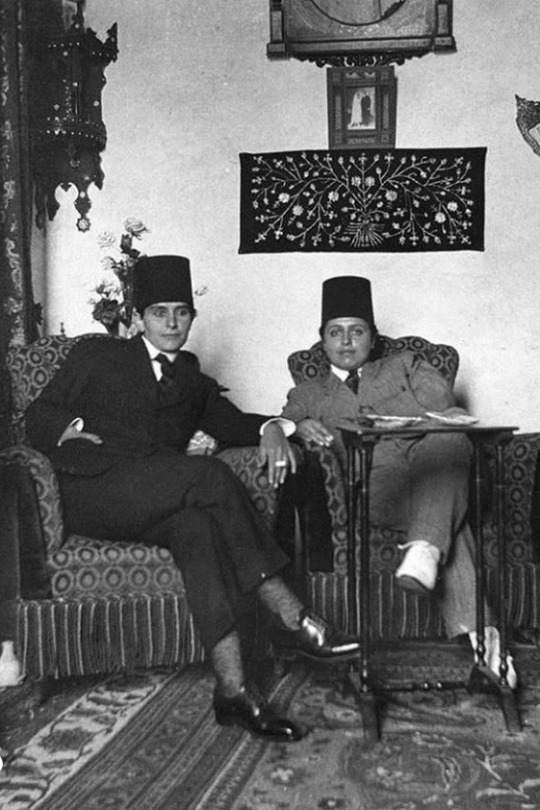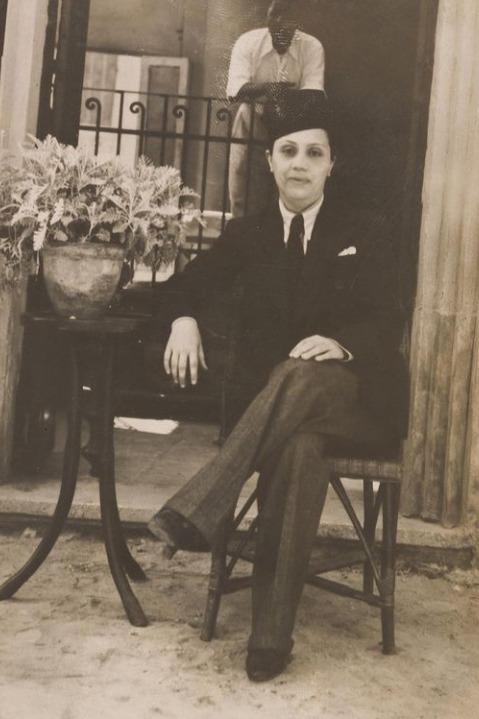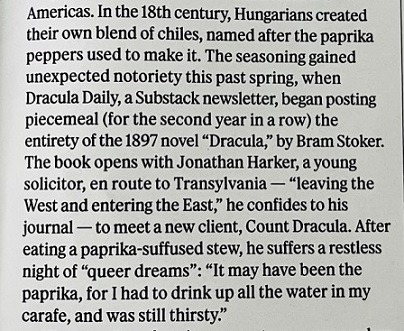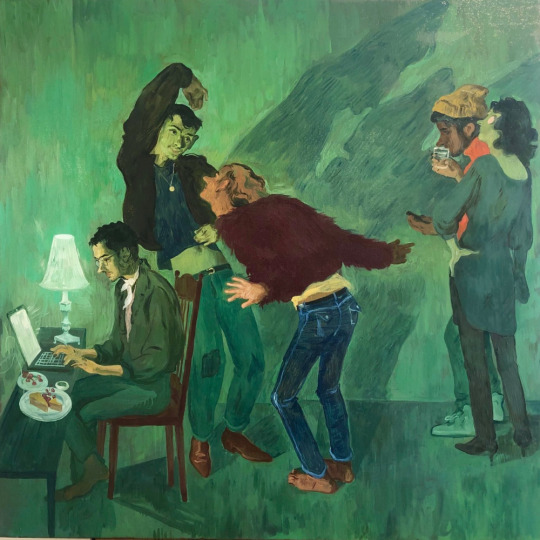#history articles
Text
16 notes
·
View notes
Text
Articles I read in May 2022
I normally don't do this, but since I have been working full time on my thesis, I read a lot of articles, so I thought I do a wrap up of those aswell. The theme of the articles is witch hunts and the historiography of witchcraft, as my thesis is on a witch trial. All the articles I found on jstor (and I will link the website), the majority are in English but I'll also include those written in Italian.
The Pursuit of Reality: Recent Research into the History of Witchcraft by Malcolm Gaskill
The Historiography of European Witchcraft: Progress and Prospects by E. William Monter
The European Witch Craze of the 14th to 17th Centuries: A Sociologist's Perspective by Nachman Ben-Yehuda
Who Were the Witches? The Social Roles of the Accused in the European Witch Trials by Richard A. Horsley
Witchcraft, Female Aggression, and Power in the Early Modern Community by Edward Bever
Witchcraft Prosecutions and the Decline of Magic by Edward Bever
The Invisible Men: The Historial and The Male Witch by Lara Apps and Andrew Gow (This is the first chapter of the book Male Witches In Early Modern Europe, I ended up reading the whole book, all the chapters are present on jstor, but I will link only this one. For those interested the book is composed by five chapters plus the introduction and conclusion)
La stregoneria. Confessioni e accuse, nell'analisi di storici e
antropologi di Mary Douglas Reviewed by Michela Pereira
Ancora a Proposito di Streghe by Michaela Valente
The full list of books I read this month and their reviews is here
#i think this type of wrap up could be a good way at the end of the month for me to realize how much i have done#i am in such a weird place atm with my thesis i don't really feel like i am doing progress even though i research even just a bit everyday#articles i read#articles wrap up#2022 articles#booklr#bookblr#studyblr#studyinspo#historyblr#history#historiography#witch hunts#witch craze#witchcraft#history of witchcraft#reading#academic reading#academic articles#history articles#mine#the---hermit
73 notes
·
View notes
Text
people who don't study history will simply never understand the joy of reading historian beef. there's nothing like it
#when they're reviewing each other's work and they're just SHITTING ON IT????? wonderful#when you can tell the historian HATES whichever historical figure(s) they're writing about? incredible#one thing we must remember is that historians are just academic gossipers xx#what is JSTOR for if not to read the DRAMA#reading an absolutely SCATCHING rebuttal of an article on New England migration and honestly??? having a wonderful time#sometimes the history student just jumps out#history
3K notes
·
View notes
Text

I am now determined to find a way to use "ice cream freezer" as an insult again.
(source: The Troy Messenger, July 13, 1882.)
#'twinkle a couple of twinks' is also A+#history#1880s#victorian#royalty#romance#vICtorIaNs wEre aLL pRUdEs (mocking spongebob meme)#also to the reporter who plagiarized this article almost word for word in the Davenport Republican in 1901#you thought you got away with it didn't you#you thought no one would possibly notice you changing a few words of a 19 year old article to be about a congressman and his wife#well I noticed#and I'm calling you out
7K notes
·
View notes
Text
one of the funniest news things in canada that always tickles me is the ongoing war between magic mushroom shops and the police.




this is the absolute height of humour to me right now
#tw drugs#lovingly cracking open a news paper just for the articles about dispensaries trolling the police#making drugs illegal has literally never ONCE in history worked#decriminalize it so we can stop overpaying useless cops to go on raids#offer SAFE AND CLEAN GOVERNMENT INSPECTED drugs like how we do with weed#stop the street drug deaths. tax them towards healthcare and social services and fucking UBI already#have the harder drugs harder to access along with on site support. no one WANTS to be stuck on meth#but ruining their lives in prison has helped approximately no one#jj stuff
1K notes
·
View notes
Text
I’m sure everyone remembers the article from 2020 where researches found three-ply cordage made by Neanderthals.^
But did you know that in the supplemental material for the article, it mentions that pine needles can be made into textiles?^^ As someone who works with textiles myself, I had come across pine needles as a dye stuff, but not as a fibre.
The source is listed as "L’acquisition des matières textiles d’origine végétale en Préhistoire" by Fabinne Médard. It talks about how other fibres, including brambles and broom could have been used prehistorically for a similar purpose, as well as flax. However, it contains only one metion of pine needles.
“Les aiguilles du pin sylvestre (Pinus sylvestris L.) fournissaient, après rouissage, une matière textile appelée « laine des forêts » qui remplaçait la ouate et l’étoupe dont on faisait également des tissus (Mathieu [1858] 1897)" *
The needles of the Scots pine (Pinus sylvestris L.) provided, after retting, a textile material called “forest wool” which replaced wadding and tow from which fabrics were also made.
So Scots pine needles were processed, spun and woven, or simply used directly after processing, potentially prehistorically.
If you follow the source for the quote above, it takes you to a book from 1860 called Flore forestière; description et histoire des végétaux ligneux qui croissent spontanément en France et des essences importantes de l'Algérie. It says:
“On fabrique depuis quelques années, avec les faisceaux fibreux, allongés, et tenaces des aiguilles, une espèce de drap grossier.” **
For several years, we have been making a kind of coarse cloth using the fibrous, elongated and stiff bundles of the needles.
So this processing of pine needles was also happening in the 1800s.
Another souce from the 1840s describes the texture of forest wool as resembling "...horsehair, and has been used for stuffing mattresses"** and that an industry sprung up in Humboldtsau, near Breslau for processing it. Manufacturies for forest wool then spread to Sweden, Holland and France, which may explain the mention in the 1860 Flore forestière.
Despite looking a bit more, but couldn't find much else on the subject expect a recent masters thesis in German (which I couldn't access) and an article on the designer Tamara Orjola.
Orjola's work investigates the modern use of pine needle fabric, showing there is still interest in it. She says:
"Forest Wool began with research on the forgotten value of plants. Valuable local materials and techniques are left behind due to the unwillingness of mass-production to adopt more sustainable practices. In the old days the pine tree was used as food, remedies, to build homes and furniture and for many other purposes. Nowadays, it is only valuable for its timber." ***
I find the line from prehistory to now facinating - that people have looked to something as mundane as a pine needle to spin, especially as researchers are discovering a lot of what they thought was linen fabric is actually ramie (from nettles).
As far as I can tell, only Pinus sylvestris L. and one other variety was used. I am not sure what makes that tree more suitable than other pine trees, or if it was simply a question of availability. In terms of processing, the answer as far as I can tell is retting, presumably followed by scutching and hackling - similar to how flax is processed. However I have not done that myself and cannot speak to the specifics.
It would be something intresting to try though.
________
^ https://www.nature.com/articles/s41598-020-61839-w#MOESM1
^^ https://static-content.springer.com/esm/art%3A10.1038%2Fs41598-020-61839-w/MediaObjects/41598_2020_61839_MOESM1_ESM.pdf
* https://journals.openedition.org/nda/602
** https://www.proquest.com/openview/276605d708970d416923b94e8856d20b/1?pq-origsite=gscholar&cbl=41445
*** https://lampoonmagazine.com/article/2021/05/15/recycled-wood-pine-needles-byproduct/
#fabric#history#i was consumed by the spirit of academia and could not stop reading french articles#please excuse the use of Google translate#my French is okay but not academic article good#it’s just a super interesting topic#the variety of plant fibres used for textiles is always larger than I think
734 notes
·
View notes
Text
« A closer look at some of the examples of messy and tactile activities from the Ice Age, perhaps unsurprisingly, reveals the presence of children. Once assumed to be the enigmatic marks made by trance-induced shamans practising some otherworldly hunting magic, archaeological research is increasingly showing that making cave art was a social, group-wide behaviour – and children were active participants.
A recent study by a team of researchers in Spain found that hand-stencils made deep within caves represent all members of society. Children, and even infants younger than three years old, participated in making hand-stencils alongside adolescent, adult and elderly individuals. The youngest undoubtedly would have had to be held still by an adult as ochre was sprayed over their hand to produce the stencils, giving an intimate glance into the making of this art. As discussed by the authors of this study, the social nature of this behaviour suggests that the making of art was not limited to a privileged few, but was an activity that involved everyone, enhancing group cohesion in the process. [...]
Making hand-stencils seems to have been a practice that was repeated by different cultural groups throughout the Ice Age world, from the caves of Pech Merle and Gargas in modern-day France to Leang Timpuseng cave in Sulawesi. [...] Even within the same cave, hand-stencils may be separated by several thousand years, implying that people returned to the same place and added their hands to the assemblage of their ancestors’ hands. This behaviour was likely a visceral experience for Ice Age people; an ancient form of handshake between hands reaching through time, and a more-or-less permanent record of having been there. [...]
How much more meaningful is it, then, that children actively participated in this important cultural practice? Not only did adults install themselves within these environments, engaging with the hands left by their ancestors in the process, but they encouraged their children to do so too. [...] Echoes of children’s playful behaviours can also be glimpsed in [...] finger flutings – marks made by tracing fingers through the soft clay-like ‘moonmilk’ that coats cave walls. [They] were often made by children, perhaps as young as five years old. There is a distinctly childlike feel to these ribbon-like marks preserved in the cave wall; one can picture children running alongside the wall, fingers firmly pressing into the pliable, muddy surface.
[...] Children’s footprints are also often present in the same caves [...]. The footprints are sometimes chaotic, with small feet overlapping one another and no clear direction from one area of the cave to another. Some have suggested this represents children dancing, painting a vivid image of children playing under the dim glow of firelight. Small crawl spaces within caves, too, were perhaps only accessible to children. The small, clumsy drawings within these spaces likely reflect children practising their own art [...].
Ice Age children, much like our own children, joyfully engaged with the world in messy and creative ways – and, it seems, were actively encouraged to do so by their parents. These hand-stencils create an intimate connection with these children. Their small hands, which last touched the rock surface of cave walls tens of thousands of years ago, reach out to us from that distant and largely unknowable past. It is as if they are enticing us to connect with them and reach back in response: a tender handshake across time. »
— Izzy Wisher, “The art of Ice Age children offers a tactile sense of the past”
9K notes
·
View notes
Text
Some random and totally useless facts about the ides of march in preparation for the stabbing main event
Caesar knew that people were conspiring against him and that they wanted to kill him but he ignored the warnings bc he basically went: i don’t care if they plan to kill me, they don’t have the audacity to actually go through with it
There was a prophecy that Caesar would be killed but he ignored that too
Caesar wanted to ditch the senate meeting bc his wife had a nightmare that something bad would happen and begged him to stay home. Decimus (the third of the main conspirators) convinced Caesar to come to the senate meeting
There were about 60 conspirators who agreed to help kill Caesar, the rest of the senators just stood by during the murder, no one really tried to help him
Riots broke out after the murder because the population generally liked Caesar
Caesar’s body was later burned at the stake
Nothing changed politically speaking because the conspirators failed to actually take over the government -> Brutus and Cassius (and many of the other conspirators) had to flee
Some sources say that Brutus was haunted by Caesar’s ghost and later impaled himself on his own sword to escape the guilt said ghost confronted him with
#the things you learn when you need to hold a presentation about caesars assasination in university#these are all from academic texts and articles about the ides of march#but you should still take them with a grain of salt bc i held that presentation in november and put all of this down from memory#i double checked none of these things#ides of march#caesar#julius caesar#brutus#history#ig don’t take this too seriously
3K notes
·
View notes
Text






Cross-dressing in Photographs of 1920s and 1930s Egypt, Palestine and Lebanon X
#gender bending in the mena region#gosh how much I love these photographs#the stance the power#the article is linked and you can read it if you want to know more#Lgbtq+ history#arab lgbtq#queer history#lgbt+#queer arab
10K notes
·
View notes
Text
in view of Netflix and a few other networks apparently announcing that they are no longer requiring actors to wear corsets/stays, but framing it as the ultimate in feminist allyship against an Oppressive Historical Torture-Garment (and presumably typing their press releases one-handed, if you catch my drift), I have a few things to say:
1. I presume they will also be condemning Spanx, dieting, weight loss surgery, obsessive exercise, breast or pectoral or ab implants, Flat Tummy Tea, editing actors’ bodies in post, etc. since this is all about promoting healthy body image. ...right?
2. Okay, this one is not tongue-in-cheek: if a costume designer forces you to wear massively uncomfortable stays or corsets and tells you your discomfort is an inherent feature of that garment type, they are lying. All the articles on this cited reports from actresses saying they threw up because of Regency stays or couldn’t eat in Edwardian corsets. And while I’m sure some of that is giving interview audiences the sensationalism they want to hear, I believe them in general.
Someone needs to tell them that that’s not normal.
I have worn corsets and stays a lot in my life. I know people who wear them as everyday support garments. And neither I nor anyone I know has been seriously hindered in normal activities by them. There are even photos and videos of women from corset-intensive eras climbing glaciers, playing sports, having snowball fights, doing manual labor...living their lives
Sure, there have always been and will always be people who find corsets or stays inherently uncomfortable- that’s why it’s good to have many support garment options available for people who need them. And there have always been and will always be ill-made, ill-fitting, or extreme examples of the type- I’m not saying corsets are always The Most Comfortable Thing Ever For Everyone, because that’s not universally true of any garment.
But these production companies have been hurting actresses under the guise of “historical accuracy,” and this latest pronouncement is just another attempt to shift the blame.
Don’t let them get away with it.
EDIT: Apparently the Official nature of the source for this announcement is in question, but the gist of the post still stands, so I’m leaving it up. Will edit further if new developments arise.
#netflix#period drama#historical fiction#bbc#itv#(those are the other networks mentioned in the articles)#dress history#fashion history#historical costuming#historical fashion#corsets#stays#rant#diet mention#disordered eating mention
3K notes
·
View notes
Text

Woman with a pet raccoon
By: Michael & Barbara Reed
From: Natural History Magazine
1984
#taken from an article about rabies...#captivity#raccoon#procyonid#carnivore#mammal#1984#1980s#Michael Reed#Barbara Reed#Natural History Magazine
267 notes
·
View notes
Text


Dracula Daily was mentioned in the New York Times magazine! The reference, of course, had to do with paprika
4K notes
·
View notes
Text






Toor’s scenes possess a kind of solemnity or quietude that does not suggest equilibrium so much as tender regard. Toor’s protagonists, obvious stand-ins for the artist himself, at least at an earlier moment in his life, seem held in suspension between two worlds, Old and New, never entirely at home in either. But he also holds them at emotional arm’s length, as if these images were tempered by time, less observations than memories, and they begin to assume the lineaments of archetype, despite their depiction of technology à la mode.
(Many of the pictures have an overall green palette, appropriate, perhaps, for the nocturnal illumination of bars or apartment parties—although more readily suggesting fin de siècle gaslight—but also reminiscent of the discoloured varnish of old paintings hanging for generations in smoke-filled drawing rooms.)
on Salman Toor
#art#art moodboard#salman toor#art detail#art history#art curator#art academia#artblr#aesthetic#moodboard#dark academia#romantic academia#chaotic academia#contemporary art#queer artist#pakistani art#green#south asia#this article was such a sweet and intelligent piece i fell in love
6K notes
·
View notes
Text


etruscan era boar/wolf's head helm (?) c.6th-5th century BC//wolf jawsome costume hate c.21st century AD
...Although this object has been described previously as a helmet, perhaps used as part of a ritual, the interpretation of the object as a helmet depends greatly on the modern reconstruction (3). The closest comparanda for the upper part of the head are boar-head protomes on Etruscan chariots, which consist of the top section of boar heads, including the snout, eyes, ears, and sometimes crests, but not the lower jaws (4). These protomes covered the draft poles of chariots at the juncture of the pole and the main body of the chariot. It is possible that the eyes, top of the snout, and parts of the upper dome are ancient pieces from an Etruscan chariot, while other sections, such as the teeth, tongue, and nose piece, were added later to create a more cohesive piece...
Transform yourself into the wolf that has had a bad rap in all the stories with this Jawesome Wolf Hat. This cap has a soft-sculpted wolf head surrounding its normal structure. It is lined for comfort and has hook and loop fasteners to keep the head in shape. (You'll even find a secret pocket so you don't need to depend on pants to keep your cards in place!)
#this is the only way i will be presenting ancient artifacts from now on#also PLEASE read the harvard art museum article i linked. it's so interesting#tagamemnon#art history#queueusque tandem abutere catilina patientia nostra
358 notes
·
View notes
Text









they're my Roman Empire
#corrected the meme bc im illiterate and dont know geography or history#added the transcription of the article about Monica too in ALT#inject that shit right into my veins#carolmaria#ramvers#danbeau#maria rambeau#monica rambeau#carol danvers
332 notes
·
View notes
Text
Stunning Codex Documenting Aztec Culture Now Fully Digitized
The 16th-century “Florentine Codex” offers a Mexican Indigenous perspective that is often missing from historical accounts of the period.
{read}
#tiktok#article#Florentine Codex#16th century#nahuatl#aztec#hyperallergic#colonialism#colonization#genocide#spain#digital archives#art#art history#language#spanish conquest#indigenous#mexico#history
262 notes
·
View notes